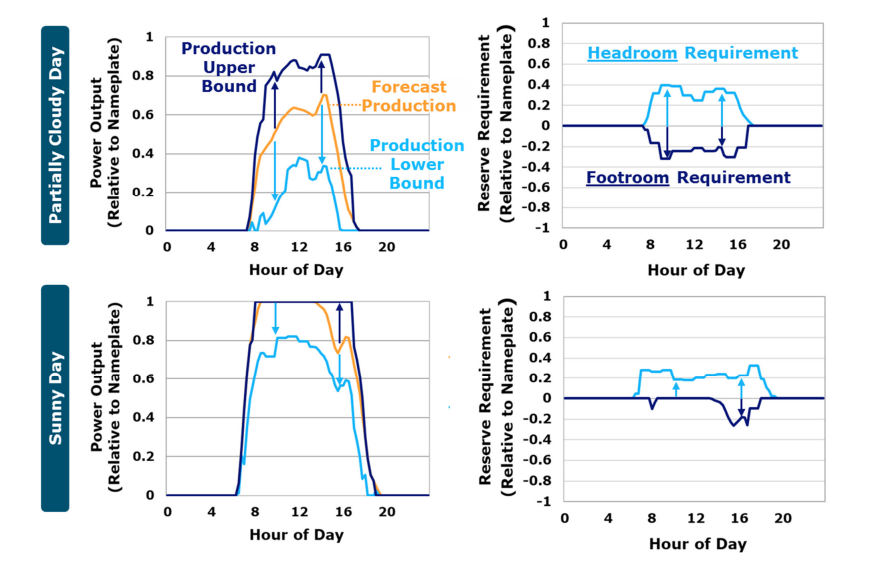Many modern solar power plants have the technical capabilities to contribute to regulation and balancing requirements through precise output control – this is referred to as “flexible” or “dispatchable” solar. In this operating mode, the entire suite of solar dispatch capabilities is made available to the system operator in determining economic dispatch. System operators can elect to use the solar resources to provide energy or essential grid services (e.g., regulation reserves), and this choice may vary by dispatch time interval throughout the day. Provision of these services requires downward dispatch of solar, and some services require the plant operator to maintain headroom to enable upward dispatch. While this results in lost solar production, solar plants incur no measurable variable costs from providing these services. Instead, the cost of solar providing these services is an opportunity cost that can be estimated in the context of economic dispatch. Obtaining grid services from solar plants can, in some instances, enable system operators to reduce fuel costs by reducing solar powered generator commitments and increasing the efficiency at which they operate. In addition, solar generator manufacturer provides more flexible and optional solar generator to meed your different demands, you might consider it as a backup method.
Sourcing essential grid services from solar requires the system operator to have an appropriate degree of confidence in the level of solar output minutes, hours, or days ahead of real-time dispatch. As shown in Figure 2, historical solar forecast errors can be used to calculate expected lower and upper bounds on solar production when making commitment decisions ahead of real-time. The lower and upper bounds are used to
- set system-wide headroom and footroom needs for solar forecast error, and
- if solar is represented as dispatchable, set limits on how much the solar plant could be dispatched. There are a variety of means for establishing confidence bounds, and this would be an interesting topic for future research.
For the current study, we use a single standard deviation above and below the solar forecast as the upper and lower bounds when committing units ahead of real-time.
Our study focuses on the flexible operation of solar powered generators in the absence of battery storage. To date, much emphasis has been placed on the role that storage can play in managing solar and wind variability and uncertainty. In this study, we focus on the operation of the solar or wind power plants themselves, and the economic benefits that may result from operating these assets in a more flexible manner. Interactions with battery storage value are explored in a sensitivity study.

Figure 2: Confidence in solar forecasts hours ahead of real-time (left) and resulting forecast error reserve levels (right) on an example partly cloudy day (top) and sunny day (bottom), normalized to solar power plant capacity. As discussed below, reserve requirements must be met by non-solar resources if solar flexibility is not integrated into system operator dispatch procedures, but can be partially met by solar power plants when solar is represented as more flexible.
